In the realm of spirituality, Pagan Witchcraft stands out as a mystical tapestry woven from ancient traditions and modern beliefs. Rooted deeply in nature, connected to the cycles of the moon, and entwined with the energies of the universe, Pagan Witchcraft is a path that beckons to those who seek a profound understanding of the natural world and their place within it. In this exploration, we will unravel the essence of Pagan Witchcraft, shedding light on its beliefs, rituals, and the vibrant resurgence it is experiencing in contemporary society.
Origins of The Pagan Witch
The origins of Pagan Witchcraft, also known as contemporary Paganism or modern witchcraft, are complex and multifaceted, rooted in a combination of ancient and more recent influences. Let’s explore its origins in more detail:
1. Ancient Roots:
Pagan Witchcraft draws inspiration from ancient pagan religions that existed before the widespread adoption of Christianity. These ancient belief systems were often nature-based and animistic, worshipping natural elements, deities associated with nature, and the cycles of the sun and the moon. Examples include ancient Celtic, Norse, Greek, and Roman religious practices. Many aspects of modern Pagan Witchcraft, such as the reverence for nature and the celebration of seasonal festivals, have their roots in these ancient traditions.
2. Witch Hunts and Persecution:
The image of the witch as a practitioner of magic and nature-based spirituality has a long history, often intertwined with fear and persecution. During the European witch hunts of the late medieval and early modern periods (roughly 15th to 18th centuries), thousands of people, mostly women, were accused of witchcraft and often executed. The stereotype of the witch as a practitioner of dark magic or dark rituals persisted in popular culture. Ironically, many of the practices associated with witchcraft were remnants of ancient pagan traditions and folk magic.
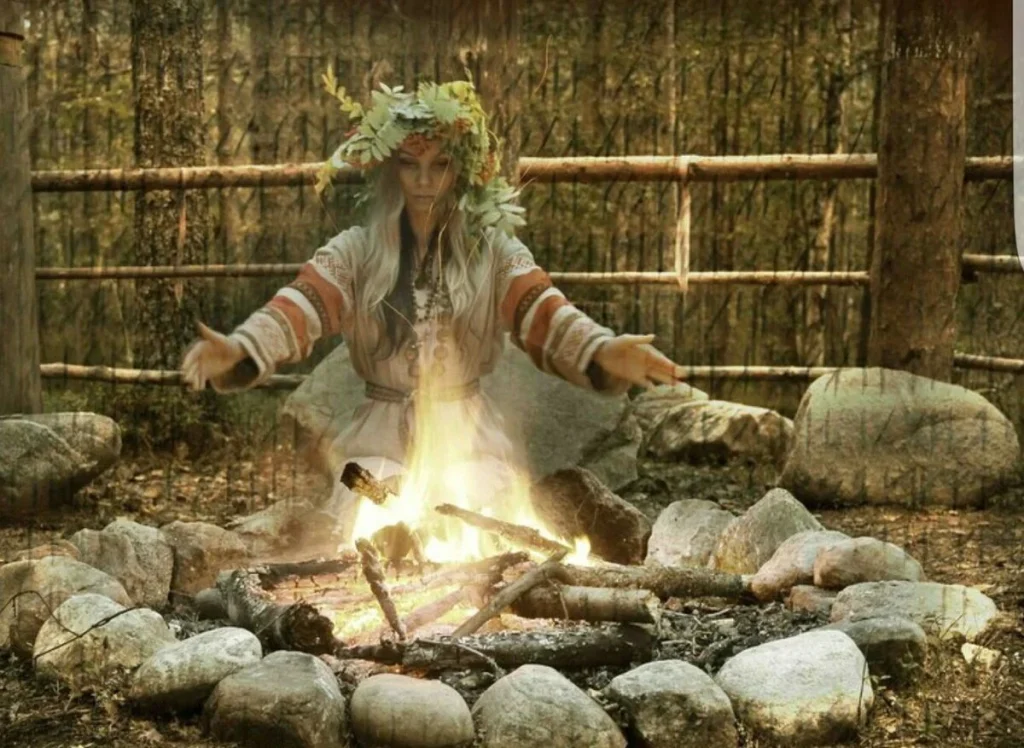

3. The Birth of Modern Witchcraft:
The 20th century witnessed a resurgence of interest in occult practices, esoteric traditions, and alternative spirituality. In the mid-20th century, figures like Gerald Gardner and Doreen Valiente played significant roles in the emergence of modern witchcraft. Gardner, often referred to as the “Father of Wicca,” founded the Gardnerian Wicca tradition, which is a significant branch of modern witchcraft. He claimed to have been initiated into a surviving witch coven in the New Forest, England, and he adapted and popularized many rituals and beliefs associated with witchcraft.
4. Wicca and Diverse Traditions:
Wicca, a prominent and influential form of modern witchcraft, emerged as a distinct religious movement in the mid-20th century. Wicca incorporates elements of ceremonial magic, ritual practices, and a reverence for nature. Over time, numerous other traditions and paths within Pagan Witchcraft have developed, each with its unique beliefs, practices, and rituals. Some examples include Druidry, Heathenry, and eclectic witchcraft, where practitioners draw from various traditions.
5. Modern Influences:
In recent decades, modern Pagan Witchcraft has been further shaped by the feminist movement, environmental concerns, and a broader societal shift towards acceptance of diverse spiritual practices. As a result, Pagan Witchcraft has become increasingly inclusive and diverse, embracing practitioners from various backgrounds, genders, and sexual orientations.
In summary, the origins of Pagan Witchcraft are deeply rooted in ancient pagan traditions, folklore, and occult practices. The movement gained momentum in the 20th century, evolving into a diverse and vibrant spiritual path that continues to thrive and adapt in the contemporary world. Today, Pagan Witches continue to draw inspiration from both ancient wisdom and modern interpretations, creating a rich tapestry of beliefs and practices that honor nature, magic symbols, and the divine.
Read More: 6 Steps on How Can I be a Witch
Beliefs and Practices of Pagan Witch
Pagan Witchcraft, also known as contemporary Paganism or modern witchcraft, is a diverse and vibrant spiritual path that encompasses a wide range of beliefs and practices. While the specifics can vary among different traditions and individual practitioners, there are some common beliefs and practices that characterize Pagan Witchcraft.
- Reverence for Nature: Central to Pagan Witchcraft is a deep reverence for the natural world it can even called by “Nature Witch“. Pagans view nature as sacred and believe in the interconnectedness of all living things. The cycles of the moon, the changing seasons, and the elements (Earth, Air, Fire, Water, and Spirit) are often venerated. Many rituals and ceremonies are conducted outdoors, allowing practitioners to connect directly with the Earth and its energies like :”Cord Cutting Rituals“.
- Polytheism and Pantheism: Pagan Witches often embrace polytheistic or pantheistic beliefs. Polytheism involves the worship of multiple deities, each associated with specific aspects of life, nature, or human experience. Pantheism, on the other hand, views the divine as immanent in the natural world, considering nature itself as sacred and divine. Deities from various mythologies and cultures are honored, and some practitioners may work closely with specific gods and goddesses in their rituals and magical workings.
- Magic and Ritual: Magic is an integral part of Pagan Witchcraft. It is seen as a natural force that can be harnessed and directed to create change in the world. Witches believe in the power of intention, visualization, and ritual tools (such as wands, athames, and crystals) to conduct spells and magical workings. Rituals are carefully crafted ceremonies that often involve invocations, chants, dance, and meditation. These rituals are performed for various purposes, including healing spells, and protection spells, divination, and spiritual growth or even simple morning rituals.
- The Wheel of the Year: Pagan Witches celebrate a series of eight festivals known as the Wheel of the Year. These festivals mark the changing seasons and agricultural cycles, and they are observed through rituals and ceremonies. The Wheel of the Year includes Sabbats (major festivals) such as Samhain (celebrating the end of the harvest season and honoring the ancestors), Beltane (celebrating fertility and the coming of summer), and Imbolc (celebrating the first signs of spring).
- Ancestor veneration and connection with spirits: Pagan Witches often honor their ancestors and spirits of the land. Ancestral veneration involves paying respects to deceased relatives, seeking guidance from their wisdom, and acknowledging the continuity of life beyond the physical realm. Witches also believe in the existence of spirits, both benevolent and malevolent, and may work with spirit guides or guardians in their magical practices.
- Personal Responsibility and Ethics: Pagan Witches adhere to ethical guidelines such as the Wiccan Rede, which states, “An it harm none, do what ye will.” This emphasizes the importance of personal responsibility and the understanding that one’s actions have consequences. Practitioners strive to live in harmony with others and nature, promoting love, respect, and understanding.
In essence, the beliefs and practices of Pagan Witchcraft revolve around a deep connection with nature, the exploration of spirituality through diverse deities, the practice of white magic spells, and the celebration of life’s cyclical nature. These elements create a rich and meaningful spiritual path for those who are drawn to the mystical world of Pagan Witchcraft.
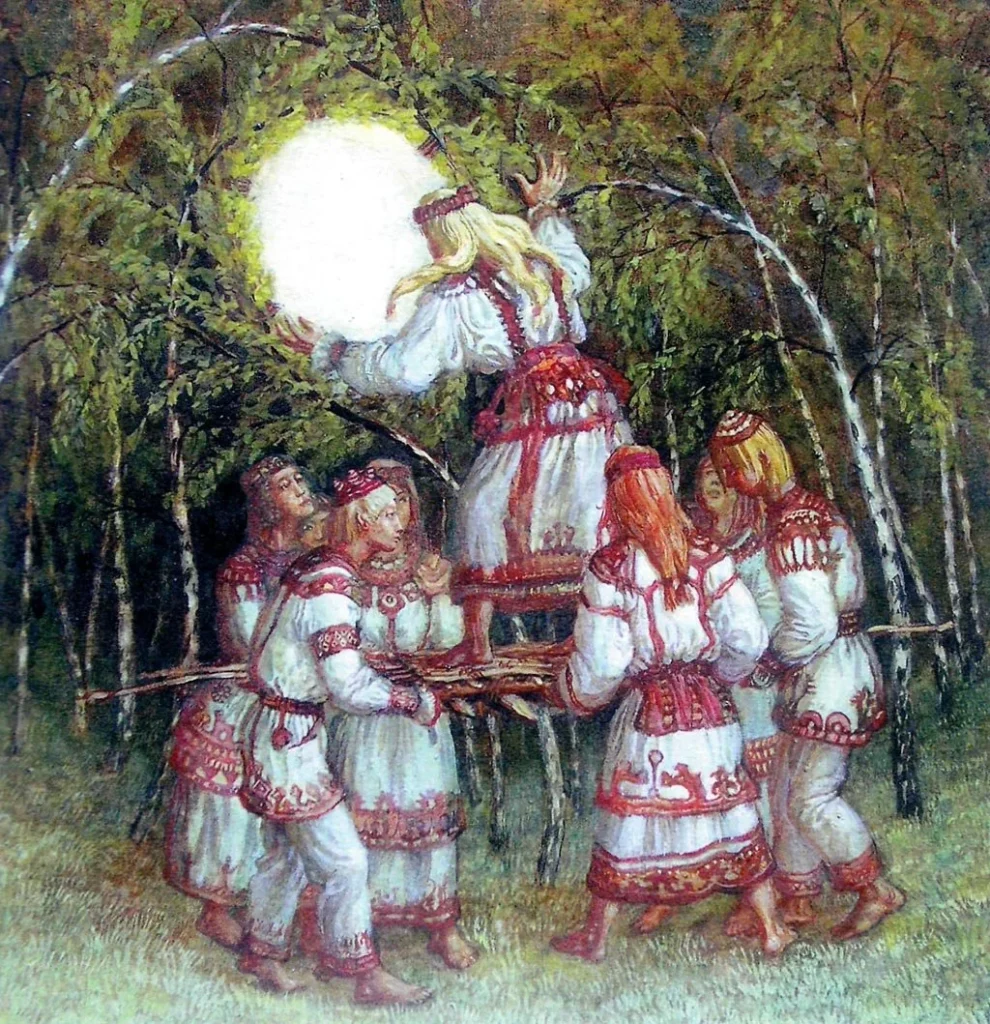

The Pagan Witch’s Connection to Nature
At the heart of Pagan Witchcraft lies a profound and intimate connection with nature, shaping the beliefs, practices, and spiritual essence of those who walk this path. The Pagan Witch sees nature not as a separate entity but as an interconnected web of life, a divine tapestry that weaves through every aspect of their spiritual journey. This connection to nature is not merely a belief; it is a lived experience, shaping the rituals, ethics, and worldview of the practitioner.
Nature as Sacred:
In Pagan Witchcraft, every rock, tree, animal, and natural element is revered as sacred. The Earth is not just a planet but a living, breathing being deserving of respect, care, and reverence. Pagan Witches often spend time in natural settings, finding solace in the whispering leaves, the flowing waters, and the song of birds. Nature is not seen as a resource to exploit but as a teacher, a healer, and a source of spiritual inspiration.
Cycles and Seasons:
Pagan Witches deeply honor the cycles of nature, celebrating the changing seasons, lunar phases, and the agricultural calendar. The Wheel of the Year, a series of eight festivals, marks these transitions. Each season – spring, summer, autumn, and winter – holds unique energies and symbolism. For instance, spring represents new beginnings and fertility, summer signifies abundance and growth, autumn embodies harvest and gratitude, and winter symbolizes introspection and renewal.
Animal and Plant Allies:
Pagan Witches believe that animals and plants possess unique wisdom and energy. They often work with specific animals or plants as allies and guides. Animal totems, for example, are spiritual guides that offer insight and protection. Plants and witch herbs are used in magical practices, not just for their properties but also to establish a deeper connection with the plant kingdom.
Divinity in Nature:
Nature itself is viewed as divine, with various deities often associated with natural elements. Gods and goddesses of the Earth, sun, moon, forests, and oceans are revered. These deities are not distant and unapproachable but are seen as immanent forces, present in the rustle of leaves and the roar of thunderstorms. The Pagan Witch finds the divine in the rustle of leaves, the dance of flames, and the sparkle of starlit skies.
Rituals in Nature:
Pagan rituals are often conducted outdoors, allowing practitioners to immerse themselves fully in nature’s embrace. Ritual circles are cast under open skies, and ceremonies are performed with bare feet touching the Earth, enhancing the connection with the energies of the land. Nature provides the backdrop for magical workings, providing the raw energy that fuels spells and invocations.
Environmental Stewardship:
The deep love for nature translates into a strong sense of environmental responsibility. Pagan Witches often advocate for eco-friendly practices, sustainability, and conservation. They understand that to harm nature is to harm the divine, and thus, they actively work to protect the environment and educate others about the importance of living in harmony with the Earth.
In essence, the Pagan Witch’s connection to nature is a spiritual communion, an acknowledgment of the intricate interweaving of life. Through this bond, they find guidance, healing, and spiritual fulfillment, embodying the timeless wisdom that the Earth generously offers to all who seek it.
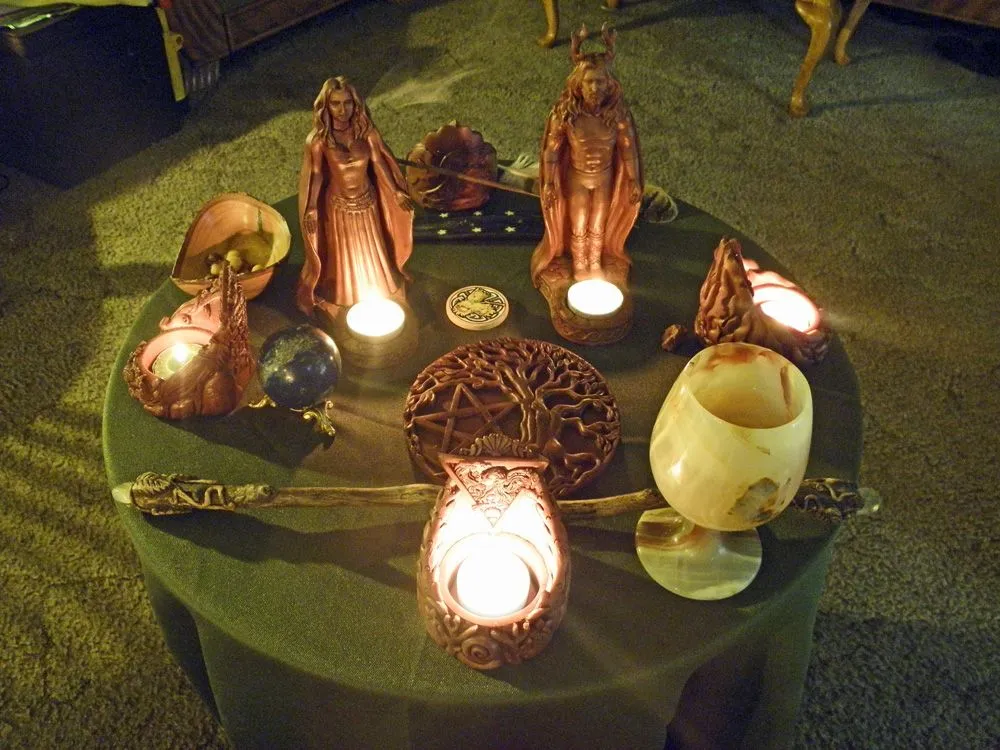

Common Deities that Pagan Witches Honor in Their Practice
Pagan witches honor a diverse range of deities from various cultural pantheons. The specific deities honored can vary depending on individual beliefs, traditions, and personal connections. Here are some common deities that pagan witches may honor in their practice:
1. The Triple Goddess: The Triple Goddess, a cornerstone of many pagan traditions, embodies the cyclical nature of life. In the maiden, she represents youthful innocence and new beginnings; as the mother, she embodies nurturing, creation, and fertility; and in her crone aspect, she personifies wisdom, transformation, and the cycles of death and rebirth. Pagan witches may invoke deities like Artemis, Brigid, or Diana to honor these phases, seeking their energies in various aspects of their lives.
2. The Horned God: The Horned God, the divine masculine counterpart to the Triple Goddess, symbolizes the untamed forces of nature, vitality, and the wild spirit. His antlers or horns signify regrowth and the cycles of the seasons. Witches may connect with deities such as Cernunnos, Pan, or Herne the Hunter, finding strength and guidance in the Horned God’s primal energy.
3. Greek Deities: Greek mythology, a treasure trove of gods and goddesses, offers a plethora of deities revered by pagan witches. Zeus, the mighty ruler of Mount Olympus, embodies leadership and power. Hera, the queen of the gods, represents marriage and family. Athena, the wise goddess, embodies intellect and strategy. Aphrodite, the goddess of love, symbolizes beauty and passion. Dionysus, the god of wine, revelry, and ecstasy, embodies celebration and liberation.
4. Norse Deities: Norse mythology, with its rugged landscapes and fierce deities, captivates the hearts of pagan witches. Odin, the Allfather, stands as a symbol of wisdom and poetic inspiration. Freya, the enchanting goddess, embodies love, beauty, and magic. Thor, the thunder god, symbolizes strength and protection. Frigg, the mother of all, embodies nurturing and fate. Loki, the trickster god, embodies change and transformation.
5. Celtic Deities: Celtic paganism, deeply rooted in the natural world, reveres deities associated with the land, magic, and wisdom. Brigid, the patroness of poets and healers, embodies inspiration and healing. Cernunnos, the horned god, symbolizes nature and the wild. Morrigan, the goddess of war and fate, embodies sovereignty and power. Danu, the mother goddess, represents the primordial waters of creation.
6. Egyptian Deities: Egyptian mythology, rich with witch symbolism and mysticism, offers a diverse array of deities. Isis, the mother goddess, embodies magic, healing, and motherhood. Osiris, the god of the afterlife, symbolizes rebirth and transformation. Ra, the sun god, embodies illumination and vitality. Bastet, the cat goddess, symbolizes protection and home. Thoth, the god of wisdom, represents knowledge and communication.
The beauty of pagan witchcraft lies in its flexibility, allowing practitioners to forge personal connections with deities that resonate deeply with their souls. Through rituals, invocations, and offerings, pagan witches honor these gods and goddesses, embracing the wisdom and energies they bring. Each relationship is unique, enriching the spiritual tapestry of the practitioner and reminding them of the vast, interconnected web of divine energies that surround and guide them.
Embracing Personal Empowerment
For the pagan witch, the practice of witchcraft is far more than a mere set of rituals or incantations—it is a transformative journey, a sacred odyssey towards personal empowerment, self-discovery, and profound spiritual growth. Within the intricate tapestry of nature, they find the threads of their own existence, weaving together a story of connection, wisdom, and magic.
Personal Empowerment:
At the heart of pagan witchcraft lies the empowering notion that every individual possesses an innate ability to shape their reality. Pagan witches see themselves not as subservient to unseen forces, but as co-creators of their destiny. Through rituals, spells, and intentional magic, they tap into the reservoirs of their own potential, learning to manifest their desires and dreams into tangible outcomes. This empowerment isn’t about control, but rather about understanding one’s place in the cosmic dance and harnessing the energies of the universe in harmony.
Self-Discovery:
The practice of witchcraft becomes a mirror, reflecting the depths of the practitioner’s soul. Through meditation, introspection, and communing with the natural world, pagan witches embark on a profound journey of self-discovery. They confront their fears, confront their shadows, and embrace their light. In the quiet whispers of the wind and the tranquil rustle of leaves, they find the guidance to explore the uncharted territories of their own psyche. This deep self-reflection is not always comfortable, but it is in these moments of discomfort that true transformation and self-realization occur.
Harmonious Living:
Pagan witches seek to live authentically, aligning their lives with the natural rhythms of the Earth. They understand that they are not separate from nature but an integral part of it. By living in harmony with the cycles of the moon, the changing seasons, and the ebb and flow of life, they attune themselves to the universal heartbeat. This harmony extends beyond the self; it encompasses the way they interact with others, their communities, and the world. Pagan witches strive to be mindful stewards of the Earth, advocating for environmental conservation, sustainability, and a deep respect for all living beings.
Honoring Ancestral Wisdom:
In the practice of pagan witchcraft, the wisdom of ancestors is not relegated to the pages of history but is a living, breathing presence. Pagan witches honor the knowledge passed down through generations, recognizing the value of ancient traditions and the teachings of their forebears. By integrating ancestral wisdom into their practices, they bridge the gap between the past and the present, forging a connection that spans time and space. This reverence for the past doesn’t mean living in stagnation; instead, it provides a firm foundation upon which new growth and understanding can flourish.
In the embrace of nature, the acknowledgment of ancestral wisdom, and the acceptance of their own magical potential, pagan witches find the keys to unlock the doors of their authentic selves. Their practice becomes a transformative alchemy, turning the base elements of their existence into spiritual gold. Through this profound journey, they emerge not only as witches but as empowered, enlightened beings, walking in harmony with the world and embracing the fullness of their existence.
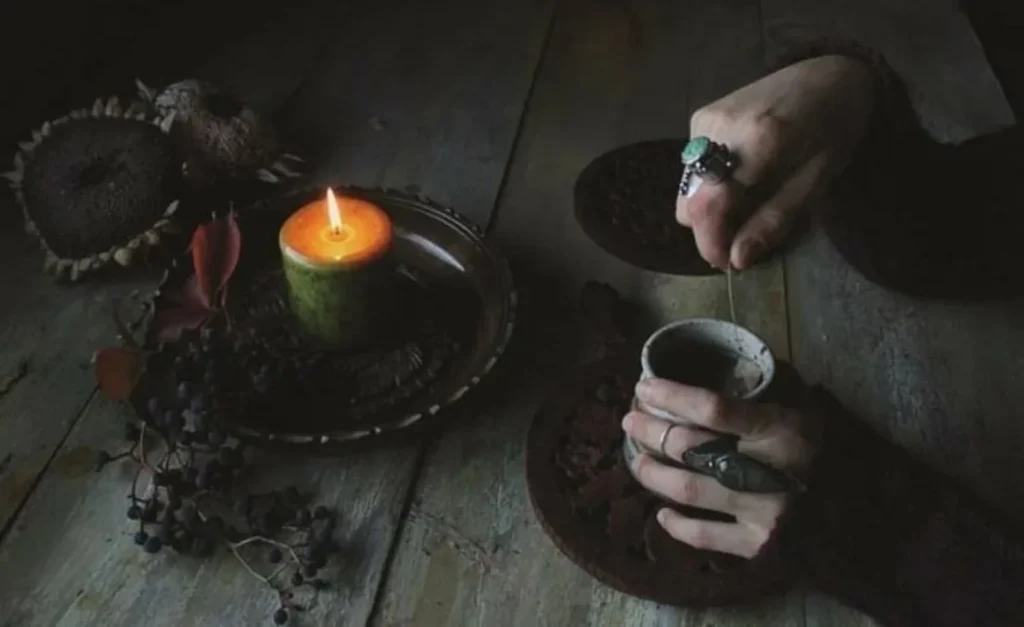

Conclusion
Pagan witchcraft offers a spiritual haven for those seeking a harmonious relationship with nature and a deeper understanding of the mysteries of the universe. By embracing ancient traditions, honoring the Earth, and practicing magic, pagans are finding meaning and purpose in a world that often feels disconnected. As the modern world continues to evolve, the allure of pagan witchcraft persists, weaving its magic into the lives of those who are drawn to its enchanting ways.

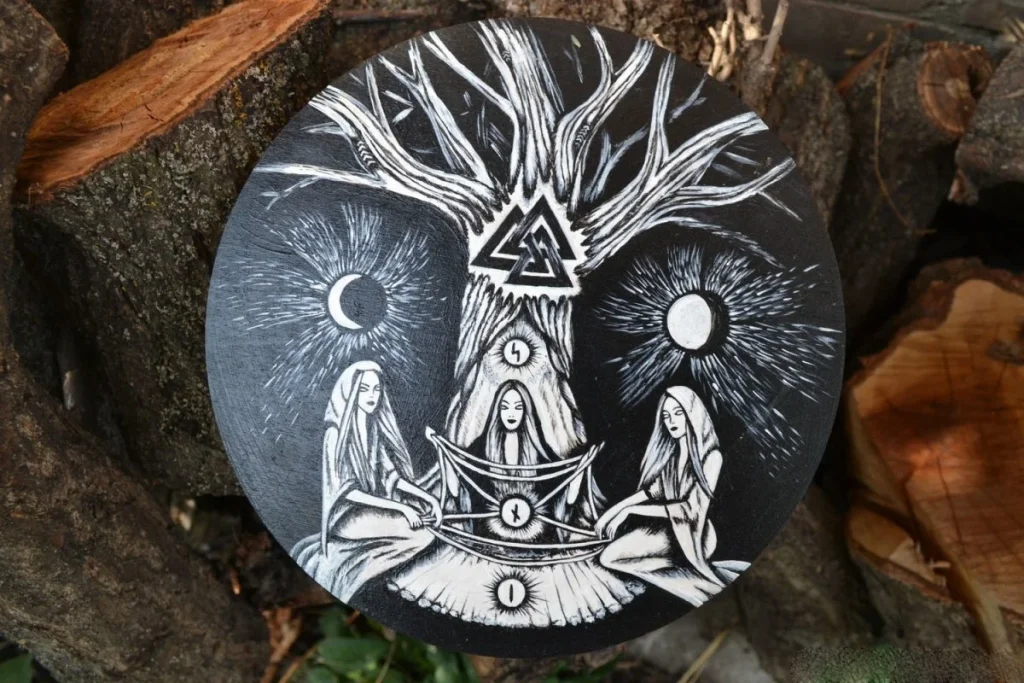
Pingback: Exploring the Enchanting World of Pagan Witchcr...
Pingback: Witch Symbols & Meanings | Explore Wiccan & Pagan Magic